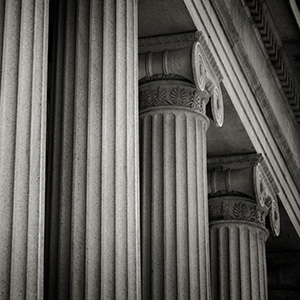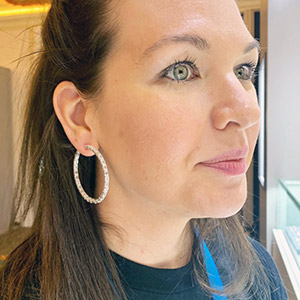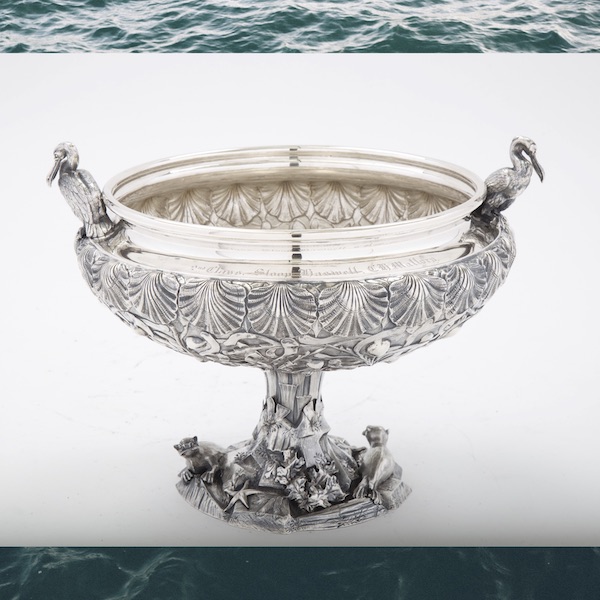
If you’re headed to New England this fall for business or pleasure, consider making a quick stop in Mystic, Connecticut—not for the usual quaintness and scenic charm, but to check out a new exhibit at the Mystic Seaport Museum. “Sea as Muse” is a dragon’s lair of silver regatta trophies, serving vessels, decorative objets, and curios, each masterfully wrought to depict a richly detailed scene that embraces the wilds and lore of the ocean and its inhabitants.
Ornate shell motifs, graceful waterfowl, whipped-up ocean waves, Renaissance-era putti, and Greco-Roman deities make many appearances alongside a host of other maritime iconography, from sirens to sailboats. As the museum had the majority of pieces in its permanent collection, the exhibition was curated with its usual clientele in mind: seafarers and sailors of all ages, especially those with an interest in maritime history. But with works by Tiffany & Co.; Gorham; Black, Starr & Frost; and Shreve, Crump & Low, the haul here promises to be uniquely interesting—and inspiring—to jewelry designers, retailers, and basically anyone drawn to shiny objects of the highest order.
Especially if silversmithing is your particular métier or fascination.
“The thing that separates a trophy from an ordinary object is the inscription,” explains “Sea as Muse” curator Katherine Hijar. But as the exhibit highlights, “trophies” could also be functional items, ones used and enjoyed in the home, whether they’re a pitcher, a punch bowl, a vase, or even an inkwell.
“What this exhibit does is really highlight these items as art objects,” says Hijar. “Part of my goal was to help visitors understand the history of decorative arts, and decorative arts as a form of communication.”
Yacht racing in United States became a popular pastime around the 1850s, and the sport was covered in great detail by the newspapers of the day. “You would get a full blow-by-blow account of the latest yachting race, and sometimes they would talk about the trophy or have an illustration of it—which, not incidentally, would provide free advertising for the maker,” says Hijar.
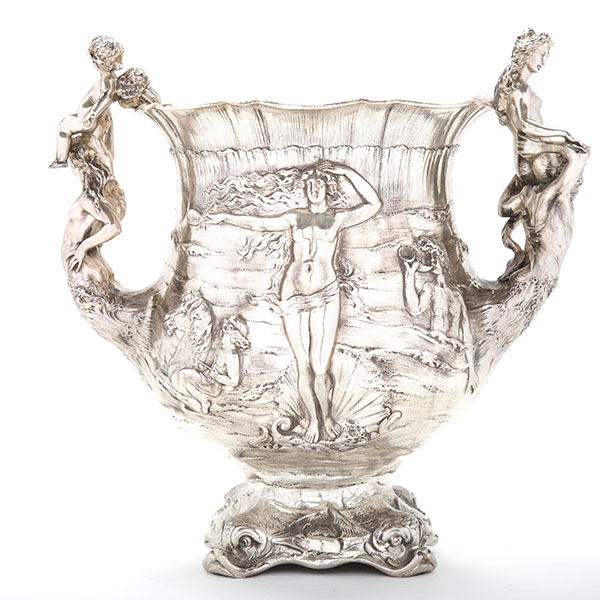
In curating the exhibit, Hijar sought to decode the design elements on display in each piece. In one corner of the room is a magnificent cup (pictured above), one of two commissioned for the New York Yacht Club by John Jacob Astor IV, with Renaissance cherubs riding dolphins and a “weird sea serpent” that resembles John Jacob Astor III (John Jacob Astor IV’s uncle). There are also “wonderful mermaids,” as well as a sensual figure that is a clear reference to Botticelli’s Birth of Venus. “She’s holding a hand mirror and that has two possible meanings,” notes Hijar. “In the Middle Ages, illuminated manuscripts showed mermaids with mirrors. Also, Gorham made this cup and [the company] made toilette articles, so I think this was a little bit of sly advertising, a way to say, ‘If this cup is beyond your price point, you can get a Gorham mirror or comb.’”
The work of two jewelry artists are included in the exhibition, including Carl Schon of Baltimore, who was known for crafting seahorse brooches and sculptural amphibian jewels. His body of work also includes seashells and mollusks rather marvelously coated in silver and transformed into desk sets, candlesticks, and objets d’art.
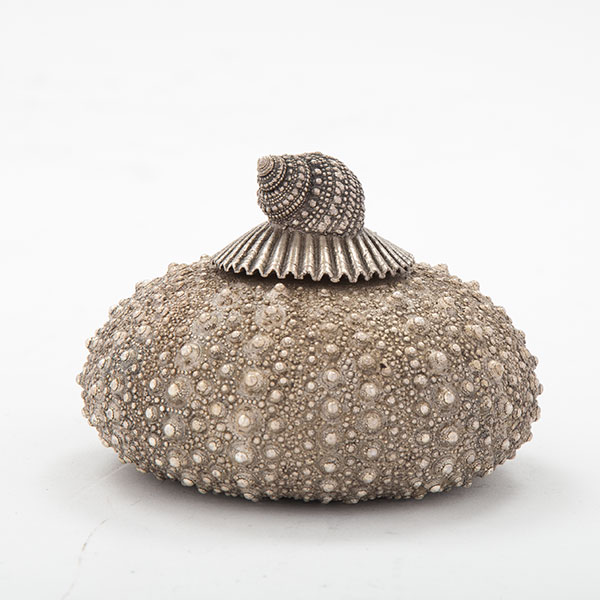
And contemporary jeweler Klaus Murer, who created the trophy below, is still alive today (albeit hard to find on the internet). Born in Switzerland, he apprenticed with Gübelin for four years at the age of 16 and then went on to learn from skilled jewelers and goldsmiths across Europe, including Georg Jensen in Denmark. He later immigrated to the United States, where he had a successful career as a jeweler in San Francisco from the 1970s to the present day until he retired in 2017.
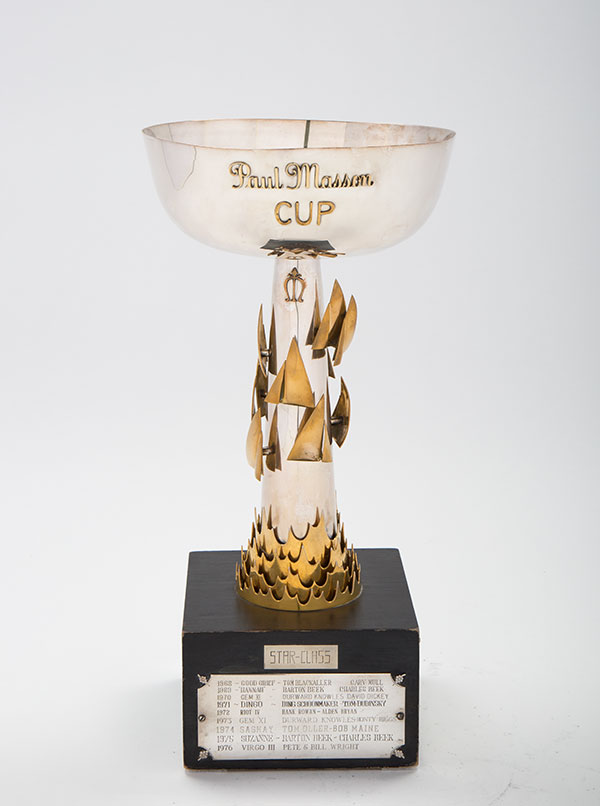
The exhibition also seeks to emphasize the craftspeople who actually produced the trophies, largely in workshops in Connecticut and Rhode Island. In one case, Hijar was able to track down the “costing receipt” for one of the more impressive cups, which led to her unearthing a job card detailing the surnames of the men who worked on it—and the hours they put in—in flourished script. Hijar’s “paper trail” is visible for all to see, a remarkable relic from the past that the jewelry trade will appreciate more than most.
“From their surnames and using various databases, I was able to identify each and every one of these workers and [when they first arrived in America],” says Hijar. “They were all immigrants from England, Norway, and Germany. This was a holy grail for me, because these craftsmen worked anonymously. I didn’t set out to tell an immigrant story, but in fact that is the story, and it really enriches [one’s] appreciation of the objects.”
As with the most important couture jewels, when you peel back each phase of the production process, you do indeed land in a workshop of anonymous artisans using their hands and muscles to sculpt and strike and chase and set. That “Sea as Muse” exhibition viewers will be reminded of the behind-the-scenes efforts that precede these glittering moments of prestige and fanfare adds even more texture to the objects catching the light.
A few more examples below.

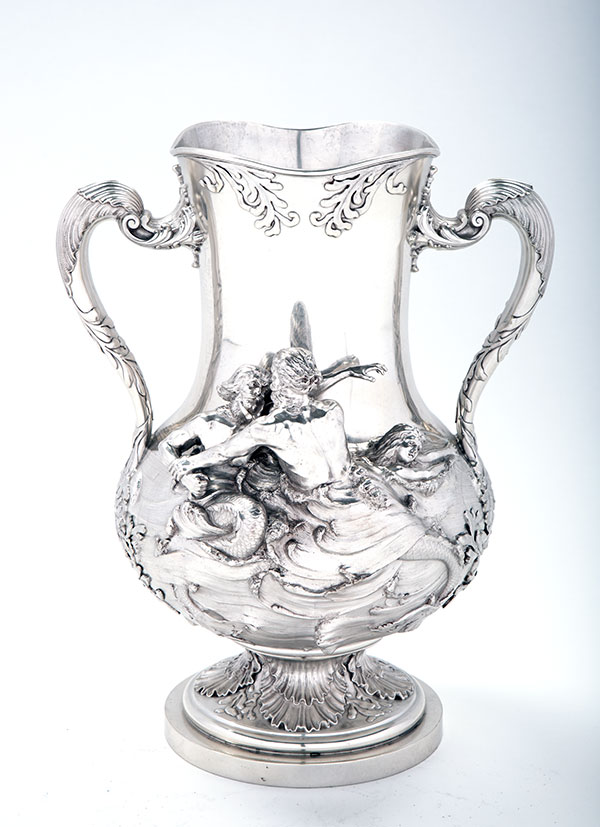
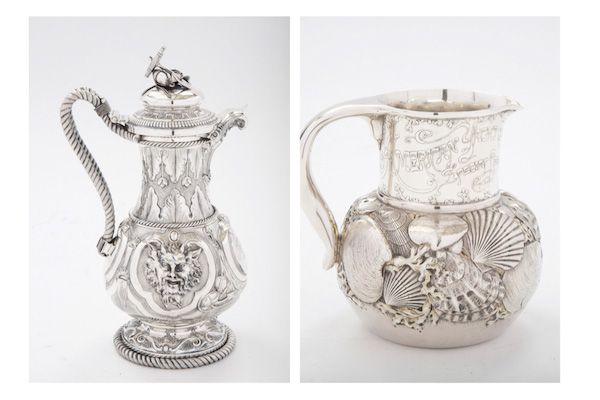
Top: Punch bowl in sterling silver, Tiffany & Co., 1858. “Sea as Muse” is on view through summer 2022. (All images courtesy of Mystic Seaport Museum)
Follow me on Instagram: @aelliott718
Follow JCK on Instagram: @jckmagazine
Follow JCK on Twitter: @jckmagazine
Follow JCK on Facebook: @jckmagazine

